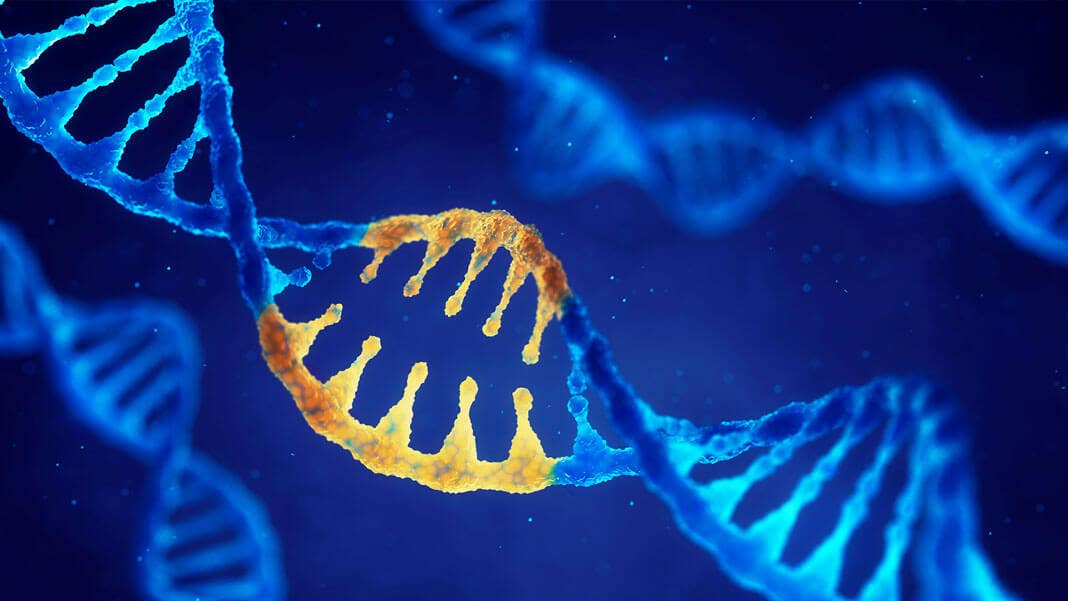CRISPR Used in Human Trials for the First Time in the US

Share
CRISPR just hit another landmark.
Last week, the University of Pennsylvania (UPenn) confirmed that they have treated two cancer patients using the gene editing darling married with another biomedical wizard, CAR-T. For now, it’s too early to tell if the treatment proved beneficial in either patient, but the team hopes to release a first batch of results in a conference or journal “at an appropriate time.”
It marks CRISPR’s first debut onto the US clinical scene, and it’s a long time coming. As early as mid-2016 the team had already received approval from the FDA to move ahead with their concept. Yet they didn’t register the trial until early 2018, taking careful precautions to not royally mess up CRISPR’s introduction into the biomedical mainstream.
This is in stark contrast to China, which, due to laxer clinical registration rules, kicked off its first CRISPR-for-cancer clinical trial in 2017 and is now tentatively ahead in the global race for CRISPR dominance.
So why the precautions? Because the history behind UPenn and gene editing is complicated, to say the least.
At the turn of the century, while riding high on the promise of genetic tinkering as a medical “silver bullet,” UPenn bid on a daring gene therapy treatment for an 18-year-old patient called Jesse Gelsinger. He died.
Gelsinger’s death is now widely considered the event that set gene therapy back by decades. Subsequent investigations into the trial found multiple problems, including underreported data on the treatment’s side effects in animals and numerous conflicts of interest.
Obviously, a lot is riding on the new trial. And Gelsinger’s tragedy looms as a cautionary tale as the team readily moves forward. Yet the meeting of CRISPR with CAR-T is akin to a final Winterfell reunion, teamed up and poised to battle against one of humanity’s darkest, cruelest threats (Apologies to non Game of Thrones fans!).
"2019 is the year when the training wheels come off and the world gets to see what CRISPR can really do for the world in the most positive sense," said gene-editing expert Dr. Fyodor Urnov at the Altius Institute for Biomedical Sciences in Seattle, who is not involved in the trial.
Here’s what you need to know.
How Does it Work?
Although the UPenn study marks CRISPR’s first foray into humans in the US, the technology actually plays second fiddle here.
The main star is CAR-T, the revolutionary cancer therapy that “levels up” the body’s immune cells with clever genetic hacks. The first therapy of this type, Kymriah by Novartis, was approved by the FDA for some childhood treatment-resistant blood cancers in 2017.
Here, doctors extract a patient’s own T cells, a type of white blood cell that normally acts as the body's watcher against cancer and infection. Cancer cells eventually learn to evade T cells or disarm the troops—while turning their own surrounding normal cells into cancerous ones, thus expanding their tumor legion.
CAR-T uses gene therapy to recharge those beaten-down T cells. The UPenn study, for example, relies on a neutered HIV-like virus to deliver an artificial “tracker” protein into those cells. These designer trackers expertly hunt down a protein dubbed NY-ESO-1, which dot certain cancer cells’ surface like a homing beacon.
CRISPR amplifies the CAR-T effect: the team is using the gene editing tool to erase three different “brakes” in T cells. Killing off the first two, TCR α and TCR β, keeps the edited cells in check to prevent friendly autoimmune fire, and allows the added “tracker proteins” to thrive in large numbers. Wiping out the third, PD-1, prevents a phenomenon called T cell exhaustion. It’s aptly named: here, tumor cells secrete molecules that literally shut down T cell activity, zapping away their killing power.
These edited T cells are then expanded in the lab into hundreds of millions before being infused back into the patient.
Combining CAR-T and CRISPR, in theory, could have “improved anti-tumor activity and enhanced persistence,” wrote Dr. Francoise Baylis at Dalhousie University in a 2017 commentary, who is not involved in the trial.
“Cell therapies [for cancer] are so promising, but the majority of people who get these therapies have a disease that relapses,” said study leader Dr. Edward Stadtmauer to Nature at the time, adding that CRISPR could eliminate CAR-T’s vulnerabilities to cancer and the body’s own immune system.
The Trial
So far, the UPenn team has treated two cancer patients with the therapy. Both had relapsed following standard treatment, and the experimental trial offers new hope. One patient has multiple myeloma, which forms from plasma cells, a type of white blood cell in the bone marrow. The other has sarcoma, which is a relatively rare type of cancer affecting connective tissues.
Both patients had their natural white blood cells depleted using chemotherapy drugs before the infusion, thus making way for the super-charged T cells to take their place.
Be Part of the Future
Sign up to receive top stories about groundbreaking technologies and visionary thinkers from SingularityHub.


The main point here, stresses the team in the trial’s registration documents, is less about the treatment’s effectiveness and more about safety. One main measure is to track the patient’s response after a single infusion of the super-cells and monitor for signs of toxicity.
It’s no small deed: Gelsinger died from gene therapy side effects in which his immune system went haywire and shut down his organs and brain in just four days. Because CAR-T and CRISPR are both toying with the immune system, the team is extra careful to monitor the patients for any signs of an impending immunological hurricane.
The second measure is more practical: the team hopes to obtain data on the feasibility of manufacturing quadruple-edited T cells, which is an engineering nightmare. For example, the virus used in CAR-T could run wild, inserting multiple copies of a gene when it isn’t supposed to. Or it could not do its gene-delivery job. CAR-T cells could simply not survive another round of CRISPR editing.
We have to carefully check the gene-disrupted T cells for purity, viability, efficiency and guard against tumor contamination, the team wrote. This first step is expected to take up to five years.
Meanwhile, the team will also be monitoring the patients for a rough first gauge of effectiveness: if the therapy can beat back the cancers, and if so, how long the patients are in remission and their overall survival rates. In all, the team hopes to recruit 18 patients for this initial study—a very small sample size. However, considering the dangers, the trial represents a laudable, deliberate first step to unleashing CRISPR’s powers in humans.
An Uncertain Future
The therapy could very well not work.
Because CRISPR is just an add-on therapy to CAR-T, the patients may not respond to CAR-T, regardless of CRISPR’s contributions. The two technologies could also clash against one another in unexpected ways rather than work in synchrony.
Then there are problems with off-target effects, especially from CRISPR. Editing more than one gene increases the chance of deleting an innocent, non-targeted essential gene, or turning CAR-T cells themselves precancerous. Recent results suggest that cells that survive CRISPR editing also tend to be those likely to turn against the body.
Some scientists also argue that there hasn’t been a sufficient amount of animal trials—with large enough samples—to justify the trial going forward in humans. But the team argues that their previous results have gone through careful, extensive review in both scientific merit and ethics.
The UPenn study isn’t the only CRISPR trial on the horizon—it just made it first in the US. Earlier this year in Europe a patient was treated with CRISPR for beta thalassemia, an inherited blood disease. Additional trials for sickle cell disease and inherited blindness are also rushing towards human trials.
As with any groundbreaking experimental therapy, there are no guarantees.
"Every human on the planet should hope that this technology works. But it might work. It might not," said bioethicist Dr. Laurie Zoloth at the University of Chicago. “Any first use in humans we have to be extraordinarily careful.”
But to Dr. Mildred Cho, a bioethicist at Stanford University, animal safety experiments for something completely revolutionary can only go so far. She said, “Often we have to take the leap of faith.”
Image Credit: nobeastsofierce / Shutterstock.com
Dr. Shelly Xuelai Fan is a neuroscientist-turned-science-writer. She's fascinated with research about the brain, AI, longevity, biotech, and especially their intersection. As a digital nomad, she enjoys exploring new cultures, local foods, and the great outdoors.
Related Articles

This Week’s Awesome Tech Stories From Around the Web (Through January 10)

What If We’re All Martians? The Intriguing Idea That Life on Earth Began on the Red Planet

Aging Weakens Immunity. An mRNA Shot Turned Back the Clock in Mice.
What we’re reading